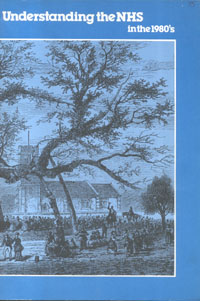The National Health Service will spend around £17,000 million in the UK in 1984: it employs more than 1.2 million full-time and part-time staff. Thus as…
The National Health Service will spend around £17,000 million in the UK in 1984: it employs more than 1.2 million full-time and part-time staff. Thus as well as being very probably the nation’s most popular major institution (Iglehart 1983, 1984), it is also…
The National Health Service will spend around £17,000 million in the UK in 1984: it employs more than 1.2 million full-time and part-time staff. Thus as well as being very probably the nation’s most popular major institution (Iglehart 1983, 1984), it is also its largest. The NHS today utilises around 6 per cent of the country’s gross national product and a similar proportion of its manpower resources. This is not far short of double the share enjoyed by the health sector in the years immediately after 1948.
Yet alongside growth and frequent acclaim the last three to four decades have brought the service many new challenges. For example, the ageing of the population has required more of its energies to be focussed on the difficult health problems associated with the chronic, disabling diseases of later life. Whilst the gradual emergence of a less controlled, more individualistic social environment has meant that British health care consumers have become less tolerant of inconvenient or inadequate patterns of service than they were in the 1950s. Such trends, together with the tensions like those associated with the NHS industrial disputes of the 1970s and early 1980s and the 1974 and 1982 structural reorganisations, have led a number of commentators to believe that the NHS has reached a crisis point. Some even suggest that it is near to collapse.
The analysis on which this paper is based offers little to support such views. Nevertheless, this is not to say that the efficiency or quality of current provisions could not be improved, or to deny the existence of a relatively high level of critical debate on the NHS. The widespread desire for better ‘customer care’, particularly in contexts such as waiting for hospital appointments; certain unacceptable failures to match service levels offered elsewhere, as in the case of renal dialysis for older patients; and talk of ‘gross NHS overmanning’ on the one hand (see, for instance, Howell 1983) and of ‘life threatening’ financial cuts on the other. All are examples of the type of issue about which there is genuine concern.
Against this background the primary goal of this paper is, in addition to updating previous Office of Health Economics guides to the organisational structure of the NHS in England1 (OHE 1974, 1977X to provide a balanced picture of the continuing evolution of the health care system and of the possibilities for its future progress. The paper does not seek to question the fundamental principle that the NHS exists to provide comprehensive health care for everyone in the population, regardless of their wealth or social status. Rather, it attempts to identify the ways in which a health care system based on the ideal of universal welfare can most efficiently achieve its aims, given both the environment in which the NHS operates in the 1980s and the fresh difficulties it will have to face in the 1990s.
To this end particular attention is paid to the problems of health service management and the issues raised by the 1983 NHS Management Inquiry — the ‘Griffiths’ report. Also, the implications of recent decisions regarding the administration of the family practitioner services (FPS) are examined.
These last, which include the general medical and the community pharmaceutical services, are run independently of the hospital services (HCHS) and arguably embody some of the most distinctive and desirable facets of the British system. Indeed, despite criticisms from some quarters, the concepts underlying the FPS may one day come to serve as a general model for the future development of the entire health service. For potentially they may permit a more pragmatic combination of national planning and, where appropriate, economic competition between providers than can the current structure of the NHS hospital service.
